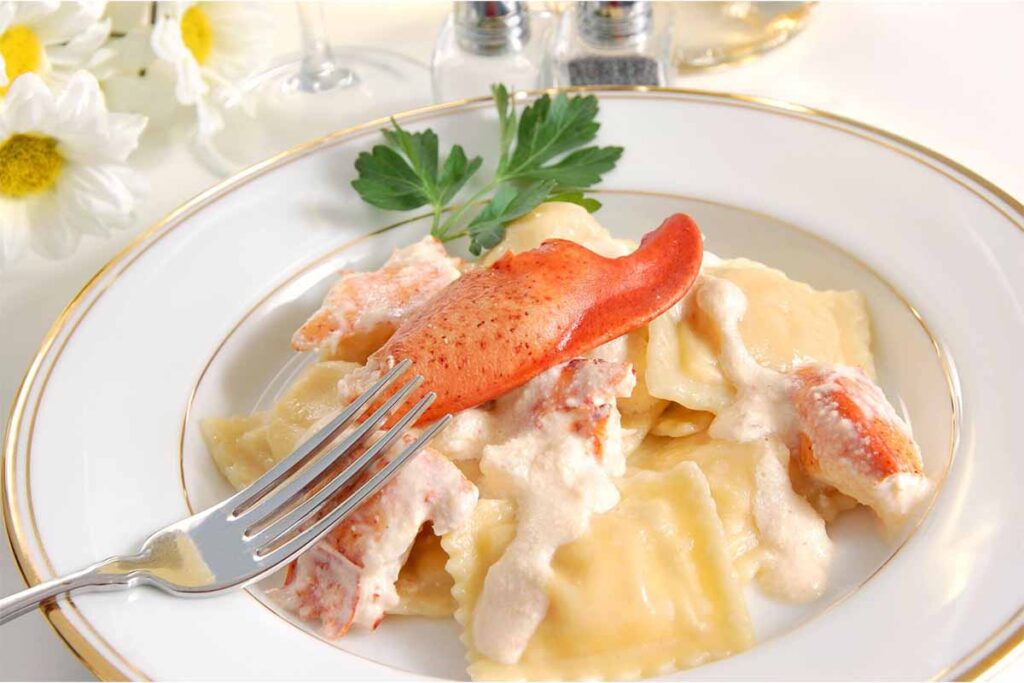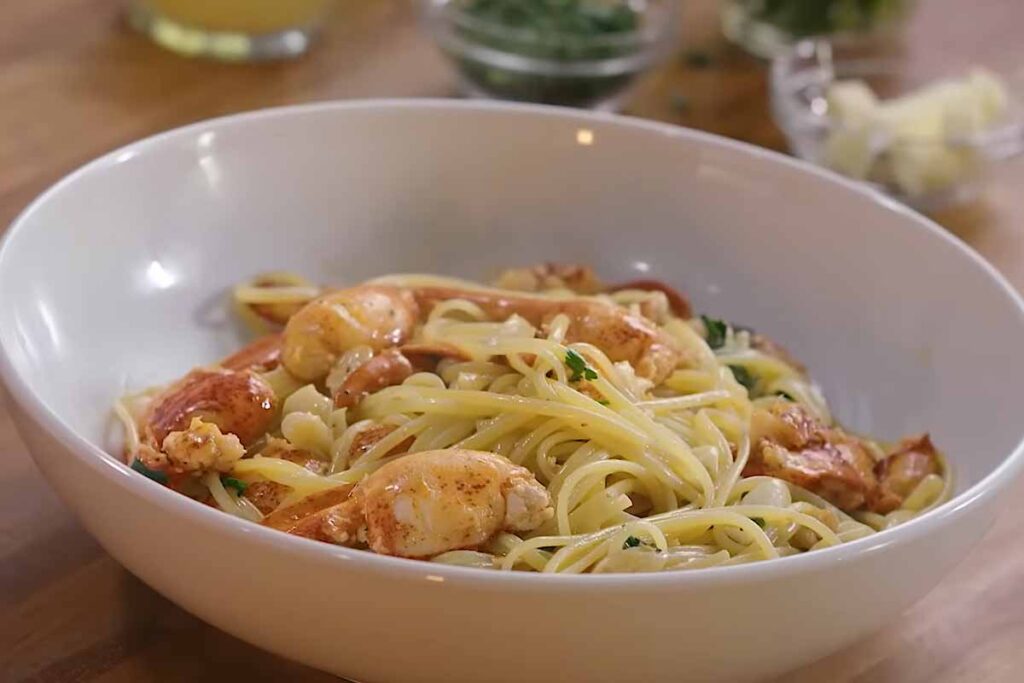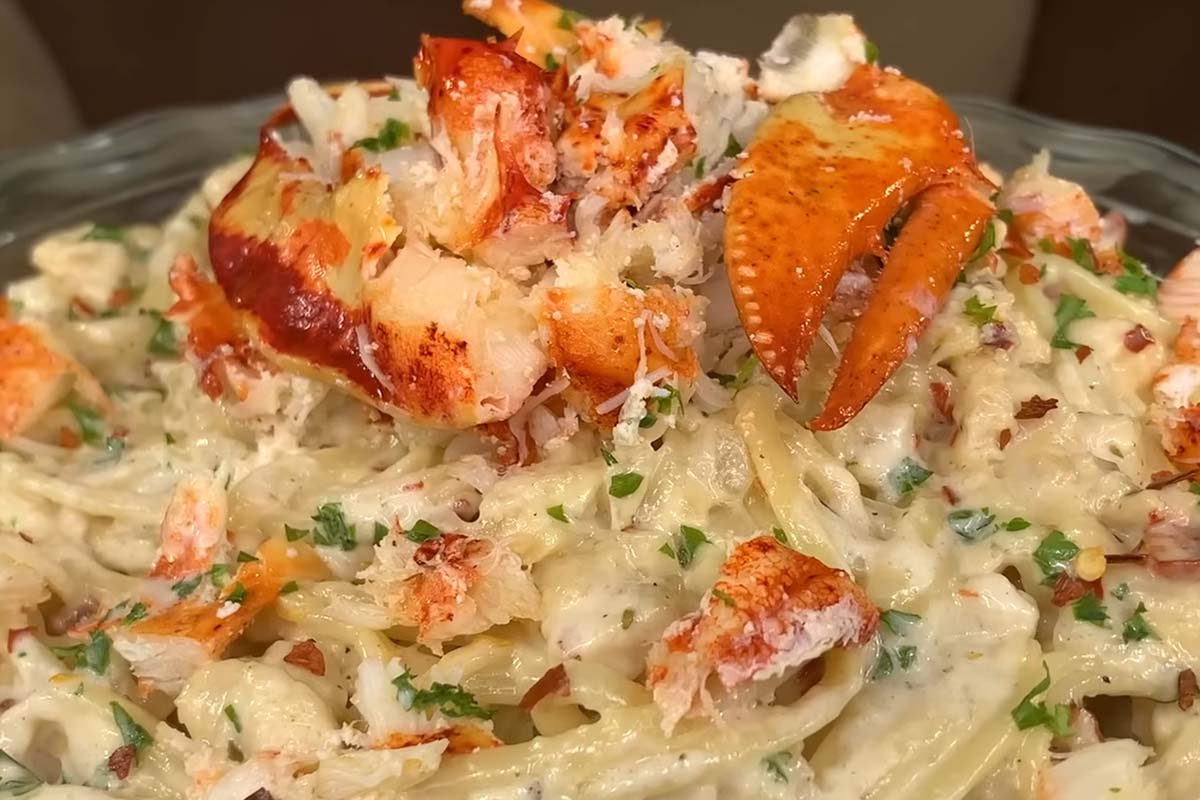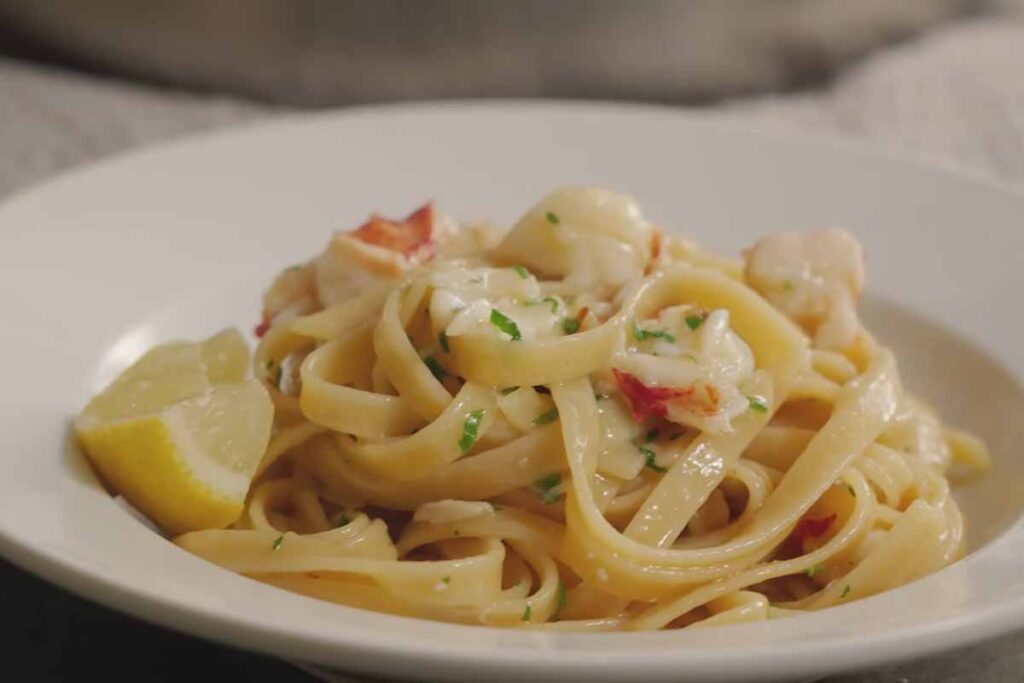Ah, lobster pasta, a dish that dances on the taste buds. It whispers tales of the sea. This culinary delight blends the luxurious taste of lobster with the comforting familiarity of pasta. It has become a favorite for many. But how did this exquisite combination come to be? Let’s dive into its alluring history and origins.
A Brief History
Historically, lobster was not always seen as the luxury food item it is today. In fact, in the early days, lobsters were so plentiful in the Northeastern United States that they were often used as fertilizer or fish bait. However, as transportation improved and the ability to ship live lobsters to distant places became feasible, lobster’s status began to rise. It wasn’t long before it became associated with fine dining and gourmet cuisine.
The marriage of lobster and pasta is a relatively recent innovation. It is a testament to the creativity of chefs looking to elevate simple pasta dishes into something extraordinary. This fusion combines the rich, sweet flavor of lobster with the al dente bite of pasta. Often, it’s enhanced with a creamy or tomato-based sauce. The result? A dish that’s both comforting and luxurious. It’s perfect for special occasions or when you simply want to treat yourself.
Cooking and History Resources
For those eager to try their hand at making lobster pasta at home, How to Cook Lobster offers invaluable tips. From selecting the perfect lobster to mastering the cooking process, this resource ensures your lobster pasta will be a hit.
In addition, understanding the origins of pasta itself adds depth to our appreciation of lobster pasta. Pasta, with its roots deeply embedded in Italian cuisine, has been a staple food for centuries. Its versatility and simplicity have made it a beloved ingredient around the world. Combining it with lobster is not just a culinary experiment but a celebration of two iconic foods. For a deeper dive into pasta’s rich history, Homemade Pasta Guide provides insights and recipes that inspire both novice and experienced cooks alike.

Thus, lobster pasta stands as a symbol of culinary evolution. It continues to captivate food lovers with its rich history and luxurious taste. Whether you’re dining out or cooking at home, it promises an experience that’s both indulgent and deeply satisfying.
Types of Lobster Pasta Dishes
Lobster pasta dishes are a symphony of flavors, each variant offering a unique taste and experience. From the classic spaghetti to the indulgent mac and cheese, these dishes have something for everyone. Let’s explore some of the most beloved types.
Classic Lobster Spaghetti
Classic lobster spaghetti is where simplicity meets luxury. This dish combines tender lobster meat with al dente spaghetti, all tossed in a rich tomato or garlic-infused olive oil sauce. It’s a testament to the beauty of minimal ingredients creating maximum flavor.

Lobster Mac and Cheese
For a comforting twist, lobster mac and cheese marries the creamy, cheesy goodness of macaroni and cheese with succulent pieces of lobster. This dish is a crowd-pleaser, offering a gourmet take on a beloved classic. The key to its success lies in the quality of the cheese and the lobster’s freshness. A blend of sharp cheddar and gruyere, for example, can provide the perfect depth of flavor.
Explore our gluten-free mac and cheese guide for a twist on this classic that everyone can enjoy.
Lobster Ravioli
Lobster ravioli is a refined dish featuring pasta pillows stuffed with a rich lobster filling, often served with a light butter or tomato sauce to not overpower the delicate lobster flavor. This dish showcases the craftsmanship of pasta making and the elegance of lobster as a filling.

Creamy Lobster Linguine
Lastly, creamy lobster linguine is a dish that combines the tender, sweet lobster meat with a creamy, often white wine-infused sauce, clinging to each strand of linguine. It’s a luxurious dish that balances the richness of the cream with the freshness of the lobster. Adding a splash of lemon juice or zest can bring a bright contrast to the creaminess.

Each of these lobster pasta dishes offers a unique way to enjoy the luxurious taste of lobster. Whether you’re in the mood for something classic, comforting, refined, or creamy, there’s a lobster pasta dish waiting to delight your palate.
Ingredients and Preparation
Creating a memorable lobster pasta dish starts with selecting the right ingredients and mastering a few key preparation techniques. Let’s dive into how to choose the best lobster and pasta, along with tips for cooking them to perfection.
Selecting the Right Ingredients
Choosing the Best Lobster
The heart of a great lobster pasta lies in the quality of the lobster itself. Fresh, live lobsters are ideal, offering the sweetest meat. Look for lobsters that are lively and active in their tank. The size can vary depending on the dish, but a 1 to 1.5-pound lobster is typically a good choice for most pasta dishes. For those who prefer convenience, high-quality frozen lobster tails can also work well, especially if fresh lobster is not available.
Pasta Selection
The choice of pasta can make or break your dish. For lighter sauces or broths, opt for thin, delicate pastas like spaghetti or linguine. These allow the flavor of the lobster to shine through without overwhelming it. For heartier, cream-based sauces, choose pastas that can hold onto the sauce, such as fettuccine or tagliatelle. The key is to match the pasta’s shape and texture with the sauce’s consistency and the lobster’s luxurious nature.
Preparation Techniques
Cooking Lobster Perfectly
Cooking lobster perfectly requires attention to timing. For boiling, a general rule is about 8 minutes per pound of lobster. Start by bringing a large pot of salted water to a rolling boil. Add the lobster headfirst, cover, and start your timer. Once cooked, plunge the lobster into ice water to stop the cooking process. This ensures the meat remains tender and easy to remove from the shell.
Pasta Cooking Tips
Cooking pasta may seem straightforward, but a few tips can elevate your dish. Always use a large pot of boiling, salted water to give the pasta enough room to cook evenly. Stir occasionally to prevent sticking. Cooking times vary, so taste the pasta a few minutes before the package’s suggested time for that perfect al dente texture. Remember to reserve a cup of pasta water before draining. This starchy water is a secret ingredient for adjusting the sauce’s consistency later.
By carefully selecting your ingredients and following these preparation techniques, you’re well on your way to creating a lobster pasta dish that’s both delicious and visually stunning. Whether it’s the succulent lobster or the perfectly cooked pasta, each element plays a crucial role in bringing this culinary delight to life.


